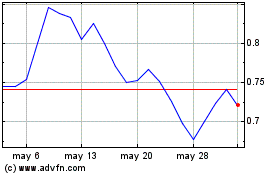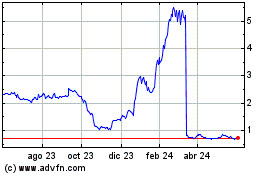CAHmelia-204 Study of 200mg Once-Daily (QD)
Tildacerfont in Adult Congenital Adrenal Hyperplasia (CAH) Did Not
Achieve Primary Endpoint of Glucocorticoid (GC) Reduction
Dose-Ranging Data from CAHptain-205 Study of
Tildacerfont in Adult and Pediatric CAH Suggests Higher Doses and
Twice-Daily (BID) Dosing May Be Necessary for Efficacy in CAH
Evaluation of Strategic Opportunities and
Cost-Reduction Activities Underway
Spruce Biosciences, Inc. (Nasdaq: SPRB), a late-stage
biopharmaceutical company focused on developing and commercializing
novel therapies for neurological and endocrine disorders with
significant unmet medical need, today announced topline results
from its CAHmelia-204 study of tildacerfont in adult CAH and its
CAHptain-205 study of tildacerfont in adult and pediatric CAH.
“We are very grateful to all the patients, families,
investigators, and the entire CAH community who supported the
CAHmelia-204 and CAHptain-205 clinical trials. We garnered
invaluable safety and exposure response data on tildacerfont from
these studies, which suggests that higher doses and more frequent
dosing may be necessary for efficacy in CAH,” said Javier
Szwarcberg, M.D., M.P.H., Chief Executive Officer of Spruce.
“Moving forward, we plan to evaluate a full range of strategic
options for Spruce in addressing diseases with serious unmet need
for patients. In the interim, the CAHmelia-204 and CAHptain-205
clinical trials will be discontinued, and we will be winding down
Spruce’s investment in tildacerfont for the treatment of CAH as we
conserve financial resources and look to maximize shareholder
value.”
CAHmelia-204 was a Phase 2b, randomized, double-blind,
placebo-controlled clinical trial that evaluated the safety and
efficacy of tildacerfont in reducing supraphysiologic GC usage in
100 adults with classic CAH on a mean GC dose of 35mg/day of
hydrocortisone equivalents (HCe) (19mg/m2/day) and mean
androstenedione (A4) level of 214 ng/dL at baseline.
The clinical trial did not achieve the primary efficacy endpoint
of the absolute change in daily GC dose from baseline at week 24.
200mg QD of tildacerfont demonstrated a placebo-adjusted reduction
from baseline in daily GC dose of 0.7mg HCe (95% CI: -4.3 to 2.9,
p=0.7). Approximately 98% of patients were highly compliant with
study drug. Tildacerfont was generally safe and well tolerated with
no serious adverse events (SAEs).
“Although the study missed its primary endpoint, the data offers
valuable insights that will shape the future of CAH management and
research,” said Jung Hee Kim, M.D., M.S., Ph.D., Principal
Investigator and Associate Professor of Internal Medicine, Seoul
National University Hospital and College of Medicine. “I am
grateful to the nearly 400 CAH patients who shared their
information with us and look forward to presenting our findings at
upcoming conferences in 2025.”
CAHptain-205 was a Phase 2 open-label, 4-week, sequential cohort
clinical trial, that evaluated the safety, pharmacodynamics
(changes in A4 levels), and pharmacokinetics of QD and BID doses of
tildacerfont from 50mg QD to 400mg BID in pediatric and adult
patients with CAH. A trend was observed of larger reductions from
baseline in A4 levels with higher BID doses of tildacerfont.
Tildacerfont was generally safe and well tolerated across all doses
with no drug-related SAEs.
“This study was well-run with excellent compliance,” said Paul
Thornton, M.B.B.S., Principal Investigator and Medical Director of
the Endocrine and Diabetes Program at a CAH Center of Excellence.
“The data suggests that a twice-daily dosing may be more
effective.”
About CAHmelia-204
CAHmelia-204 was a Phase 2b, randomized, double-blind,
placebo-controlled clinical trial that evaluated the safety and
efficacy of tildacerfont in reducing supraphysiologic
glucocorticoid (GC) usage in 100 adults with classic congenital
adrenal hyperplasia (CAH) on supraphysiologic doses of GCs with
normal or near normal levels of androstenedione (A4) at baseline.
In the first part of the clinical trial, patients were randomized
to receive 200mg of tildacerfont once-daily (QD) or placebo for 24
weeks. During the second part of the clinical trial, all patients
received 200mg of tildacerfont QD for 52 weeks. Throughout the
trial, tapering of GCs was guided according to a pre-specified
algorithm based on A4 normalization. The primary endpoint of the
clinical trial was the absolute change in daily GC dose in
hydrocortisone equivalents (HCe) from baseline through week 24.
About CAHptain-205
CAHptain-205 was a Phase 2 open-label clinical trial, which
utilized a sequential nine cohort design, to evaluate the safety,
efficacy, and pharmacokinetics of tildacerfont in adults and
children between two and 17 years of age with CAH. Cohorts 1-3
evaluated weight-adjusted doses of tildacerfont between 50mg QD and
200mg QD in pediatric CAH patients between two and 17 years of age
and assessed changes in androgen levels over 12 weeks of treatment
as well as the ability to reduce daily GC dose based on A4
normalization. Cohorts 4-9 evaluated weight-adjusted doses of
tildacerfont of 200mg twice-daily (BID) and 400mg BID in adults and
children between two and 17 years of age with CAH to assess changes
in androgen levels over four weeks of treatment.
About Congenital Adrenal Hyperplasia (CAH)
CAH is an autosomal recessive disease, driven by a mutation in
the gene that encodes an enzyme necessary for the synthesis of key
adrenal hormones. In CAH patients, the body is not able to produce
cortisol, leading to serious health consequences. The absence of
cortisol alters the normal feedback cycle of the
hypothalamic-pituitary-adrenal (HPA) axis and leads to excess
secretion of adrenocorticotropic hormone (ACTH), hyperplasia of the
adrenal gland, and consequently high levels of adrenal androgen
production. As a result, CAH patients may suffer from premature
puberty, impaired fertility, hirsutism, acne, the development of
adrenal rest tumors, and an impaired quality of life, and
additionally for females, virilized genitalia and menstrual
irregularities. Currently, the only way to downregulate the
production of excess androgens in CAH patients is to administer
supraphysiologic doses of GCs, which present specific side effects,
including increased risks of developing diabetes, cardiovascular
disease, stunted growth, osteoporosis, thin skin, gastrointestinal
disorders, and decreased lifespan.
About Tildacerfont
Tildacerfont is a potent and highly selective, non-steroidal,
once-daily oral antagonist of the CRF1 receptor, which is the
receptor for corticotropin-releasing factor (CRF), a hormone that
is secreted by the hypothalamus. The CRF1 receptor is abundantly
expressed in the pituitary gland where it is the primary regulator
of the HPA axis. By blocking the CRF1 receptor, tildacerfont has
the potential to address the uncontrolled cortisol feedback
regulatory pathway in CAH, and in turn reduce the production of
ACTH in the pituitary, limiting the amount of androgen produced
downstream from the adrenal gland. By controlling excess adrenal
androgens through an independent mechanism, tildacerfont has the
potential to reduce the unwanted clinical symptoms associated with
high androgen exposure and could also enable treating physicians to
lower the supraphysiologic GC doses given to CAH patients to near
physiologic levels. No drug-related serious adverse events have
been reported related to tildacerfont treatment in completed
studies.
About Spruce Biosciences
Spruce Biosciences is a late-stage biopharmaceutical company
focused on developing and commercializing novel therapies for
neurological and endocrine disorders with significant unmet medical
need. To learn more, visit www.sprucebio.com and follow us on X,
LinkedIn, Facebook and YouTube.
Forward-Looking Statements
Statements contained in this press release regarding matters
that are not historical facts are “forward-looking statements”
within the meaning of the Private Securities Litigation Reform Act
of 1995. Such forward-looking statements include statements
regarding, among other things, the Company’s plans to evaluate a
full range of strategic options, the discontinuance of the
CAHmelia-204 and CAHptain-205 clinical trials, and the wind-down of
the Company’s investment in tildacerfont for the treatment of CAH.
Because such statements are subject to risks and uncertainties,
actual results may differ materially from those expressed or
implied by such forward-looking statements. Words such as
“anticipate”, “will”, “potential”, “plan” and similar expressions
are intended to identify forward-looking statements. These
forward-looking statements are based upon Spruce’s current
expectations and involve assumptions that may never materialize or
may prove to be incorrect. Actual results could differ materially
from those anticipated in such forward-looking statements as a
result of various risks and uncertainties, which include, without
limitation, risks and uncertainties associated with Spruce’s
business in general, the impact of geopolitical and macroeconomic
events, and the other risks described in Spruce’s filings with the
U.S. Securities and Exchange Commission. All forward-looking
statements contained in this press release speak only as of the
date on which they were made and are based on management’s
assumptions and estimates as of such date. Spruce undertakes no
obligation to update such statements to reflect events that occur
or circumstances that exist after the date on which they were made,
except as required by law.
View source
version on businesswire.com: https://www.businesswire.com/news/home/20241210266378/en/
Media Katie Beach Oltsik Inizio Evoke Comms (937)
232-4889 Katherine.Beach@inizioevoke.com media@sprucebio.com
Investors Samir Gharib President and CFO Spruce
Biosciences, Inc. investors@sprucebio.com
Spruce Biosciences (NASDAQ:SPRB)
Gráfica de Acción Histórica
De Dic 2024 a Ene 2025

Spruce Biosciences (NASDAQ:SPRB)
Gráfica de Acción Histórica
De Ene 2024 a Ene 2025
